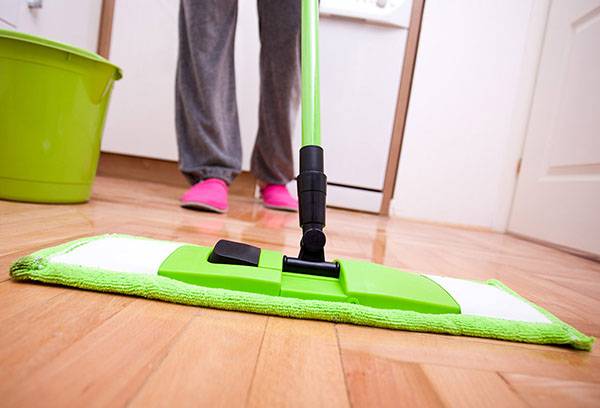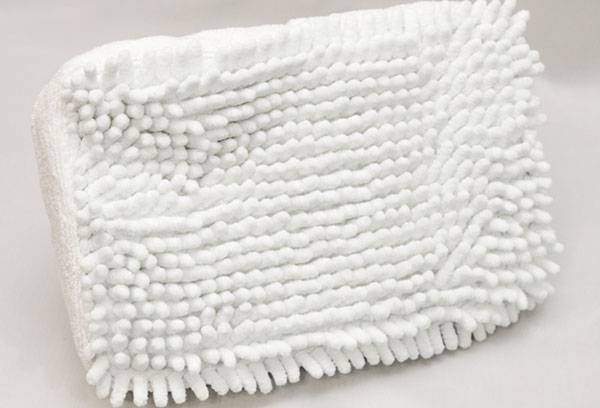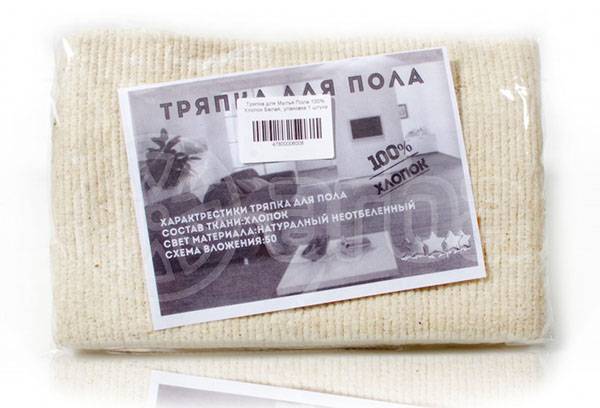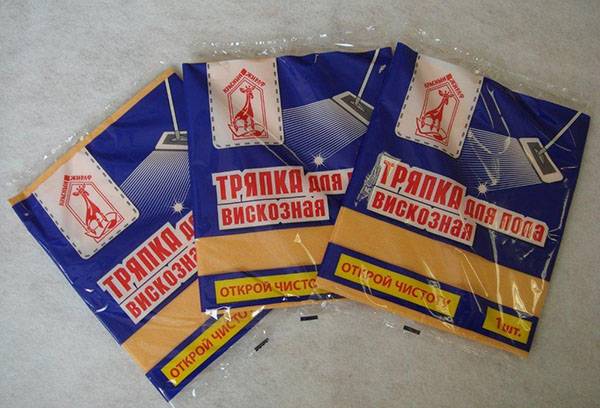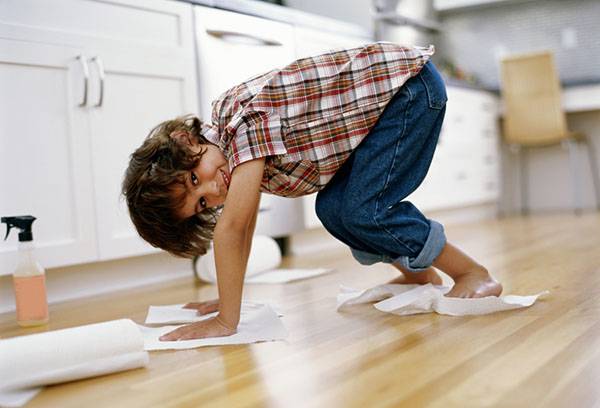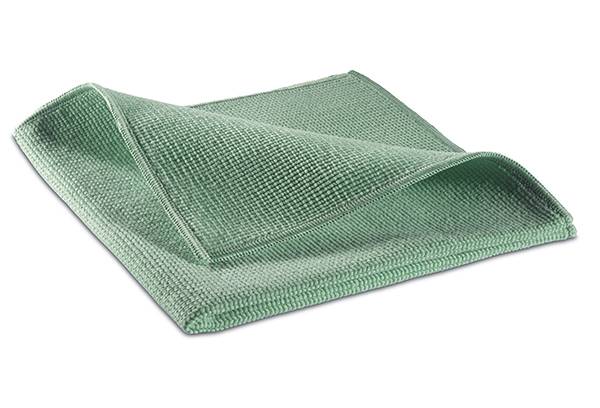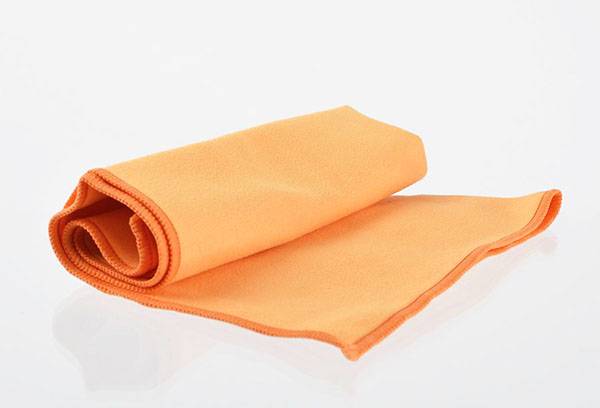How to choose a rag for mopping?
For a good housewife, a rag for mopping is an extremely important subject. Not only the appearance of your home, but also the health of the family depends on the cleanliness of the floors. Wet cleaning is responsible for the clean air we breathe. To facilitate this process, you need to choose the right items for cleaning. An old terry towel or a piece of a grandmother’s bathrobe does not meet modern requirements. Hateful stains may remain on a glossy tile or smooth surface of a laminate.
General rag tips
In specialized stores of household goods, shelves are bursting with a wide range. The texture of any material has certain properties, so the operating conditions of the rags differ.
A cleaning rag must combine two qualities:How to choose a rag for mopping?
- quickly absorb water;
- to be soft.
Rags are made of various materials (natural and synthetic). "Homemade" from old things do not meet the requirements for cleaning modern rooms. Nowadays, there is a whole industry that manufactures various household products that meet individual requirements. The choice depends on the material with which the floor is covered. It can be parquet, laminate, linoleum or tile.
After washing the floors with a special rag at least once, you will not return to using an old towel. Modern materials have a number of indisputable advantages:
- easily wrung out;
- Do not smear the dirt, but absorb it;
- collect dust well;
- Do not leave stains on a glossy floor;
- do not crumble, do not leave villi on the washed floor surface;
- serve for a long time.
The price of such products is not too high, so you should at least once try to get a convenient and durable "assistant" in the household.
Material selection
A wide range is created to facilitate the selection of goods, but in some cases this leads the buyer into confusion. It is not so easy to choose the right fabric for mopping. Rags are made from natural or synthetic material. Each of them has its advantages and disadvantages. We will talk about the following fabrics:
- cotton;
- viscose;
- polyamide;
- acrylic;
- microfiber.
The latest material can be considered innovative. Having appeared on the market of household goods relatively recently, he managed to win the hearts of many housewives.
Cotton
Cotton is a good helper when cleaning the house. Natural fabric exhibits excellent moisture absorption and breathability. In addition, it is pleasant to the touch. However, the benefits do not end there.
Of all natural fabrics, cotton stands out by its comparative strength. The threads at the edges do not crumble even without additional processing. Such rags do not stretch and easily survive multiple washings.
Despite the list of advantages, cotton rags have several disadvantages:
- quickly wiped;
- shrink after heat treatment;
- lose shape during harvesting;
- may leave stains.
Cotton rags with the addition of polyester are durable and leave less stains on the floor.
Viscose
Viscose is a representative of a group of synthetic fabrics. To clean the floors, they do not use silk-like fabric, but porous fabric made from viscose fiber. The main quality is increased strength, which significantly extends the service life. Rayon is sold not only in individual packages, but also in rolls. In this case, the price will be indicated per linear meter.
The material is obtained through the processing of cellulose.The process is environmentally friendly. Unlike cotton, a viscose rag has a number of features:
- higher hygroscopicity (better absorbs moisture);
- does not leave fibers and threads on the floor due to the smooth surface;
- does not lose shape after washing;
- Does not fade, does not lose its appearance.
Among the minuses, the mistresses note instability to high temperature. When using such a product, the water in the rinse bucket should be cold. The second drawback is the remaining stains when trying to clean an excessively dirty floor. This can be avoided by choosing a rag in which the viscose is diluted with polyester.
Acrylic
The production of this material is based on natural gas. Acrylic is form-stable. It resembles wool to the touch. The material is hypoallergenic, retains color, does not deform when interacting with acids and alkalis.
Tip
Do not use acrylic for wet cleaning.
A significant disadvantage is the low hygroscopicity. The fabric is practically airtight and absorbs water very poorly. Because of this, acrylic rags are used to rub floors with a shiny surface (parquet or laminate), and not for wet cleaning.
Polyamide
Another type of synthetic fabric for cleaning. Polyamide is very flexible, it dries quickly and is resistant to mechanical stress. Even after repeated cleaning, its shape and color remain unchanged. The fabric is pleasant to the touch, light and airy. A significant plus is resistance to the occurrence of fungi and decay.
Among the minuses of this material, only a rather high price can be noted. However, as the reviews of satisfied housewives show, the price is very reasonable.
Microfiber
Microfiber is a Japanese discovery of the late 20th century. This is a “favorite” not only among women, but also among men (they use similar rags when washing and cleaning cars). Microfiber has an absolutely unique structure. Due to the ultra-thin fibers, the fabric instantly absorbs water, dirt, dust and other possible contaminants.
Tip
Do not use microfiber to clean floors in the kitchen.
Learn more about the benefits.
- Hygroscopicity. The fibers are woven in such a way that a lot of space remains between them. Under a microscope, the microfiber structure resembles the structure of a sponge. It is able to absorb 4 times more fluid than any other matter. However, after squeezing, the water does not linger in the fibers, which makes the rag almost dry to the touch.
- Bright persistent colors. To ensure that cleaning does not seem like an onerous task, housewives love to give this process aesthetics. Microfiber has bright colors that do not fade when interacting even with warm water.
- Does not leave a pile. Any of the materials described above can leave a small amount of hardly noticeable villi. Microfiber eliminates this possibility.
There are also downsides.
- The material does not tolerate heat treatment. Microfiber cloth is contraindicated to dry on hot batteries or wash at high temperature.
- It is capable of storing static electricity, which is a magnet for dust. Because of this, microfiber needs to be washed a little more often than other materials.
- All vaunted properties are blocked when interacting with fat. Because of this, it is better to clean the floors in the kitchen with a different rag.
All of these materials have certain advantages and disadvantages. Each hostess must make an individual choice, focusing on the properties of the fabric and its price category. All rags must be periodically disinfected, washed at a water temperature of no higher than 40 degrees and used strictly for their intended purpose.
We recommend reading the article: window cleaning devices on both sides
